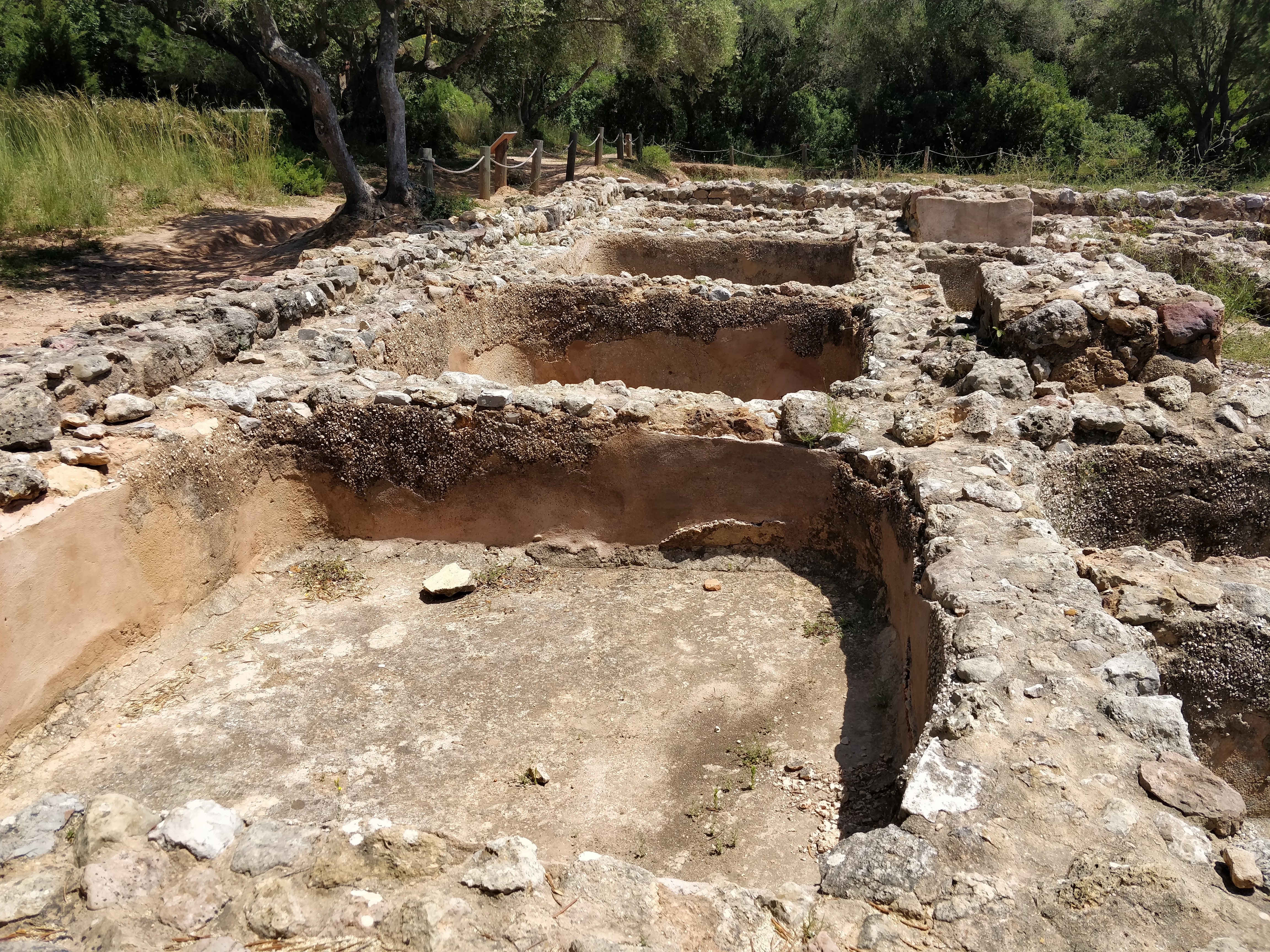|
Roman Ruins Of Creiro
The Roman ruins of Creiro are situated in the Arrábida Natural Park above Creiro Beach in the Setúbal District of Portugal. They are ruins of a fish-salting factory and Roman baths, dating back to the days when the province of Lusitania formed part of the Roman Empire. History In Roman times, the richness of fish and salt in the estuary of the Sado River led to the creation of salted-fish industries centred on the towns of Cetóbriga (now Setúbal) and Tróia. The factory at Creiro was one of the smaller but older production units for salted and pickled fish and fish sauces that were exported throughout the Empire. The Setúbal area was the Roman Empire’s most important area for fish product processing. The ruins were first identified by the archaeologist António Inácio Marques da Costa in 1907. However, he provided no detailed information about the site and it was not until 1964 when his unpublished manuscripts were discovered that the nature of the site was officially kn ... [...More Info...] [...Related Items...] OR: [Wikipedia] [Google] [Baidu] |
Setúbal District
The District of Setúbal ( pt, Distrito de Setúbal ) is a district located in the south-west of Portugal. It is named for its capital, the city of Setúbal. Geography It is delimited by Lisbon District and Santarém District on the north, Évora District on the east, Beja District on the south and the Atlantic Ocean on the west. It has an area of , and a population of 789,459 inhabitants. It was split off from Lisbon District in 1926, and is the only Portuguese district created after 1835. Municipalities It is composed of 13 municipalities, spread over two sub regions: * Península de Setúbal Subregion NUTS II Sub-Region: ** Alcochete ** Almada ** Barreiro ** Moita ** Montijo ** Palmela ** Seixal ** Sesimbra ** Setúbal * Alentejo Litoral Subregion: ** Alcácer do Sal ** Grândola ** Santiago do Cacém ** Sines List of Parliamentary Representatives Summary of votes and seats won 1976-2022 , - class="unsortable" !rowspan=2, Parties!!%!!S!!%!!S!!%!!S!!%!!S!! ... [...More Info...] [...Related Items...] OR: [Wikipedia] [Google] [Baidu] |
Opus Signinum
''Opus signinum'' ('cocciopesto' in modern Italian) is a building material used in ancient Rome. It is made of tiles broken up into very small pieces, mixed with mortar, and then beaten down with a rammer. Pliny the Elder in his '' Natural History'' describes its manufacture: "Even broken pottery has been utilized; it being found that, beaten to powder, and tempered with lime, it becomes more solid and durable than other substances of a similar nature; forming the cement known as the "Signine" composition, so extensively employed for even making the pavements of houses." Pliny's use of the term "signine" references "Signia (modern Segni), the name of a town in Latium which was famous for its tiles." Origins, spread, disuse The technique, most probably invented by the Phoenicians, is documented in the early 7th cent. BC at Tell el-Burak (Lebanon), then in Phoenician colonies in North Africa, some time before 256 BC, and spread north from there to Sicily and finally to the Italian ... [...More Info...] [...Related Items...] OR: [Wikipedia] [Google] [Baidu] |
Archaeological Sites In Setúbal District
Archaeology or archeology is the scientific study of human activity through the recovery and analysis of material culture. The archaeological record consists of artifacts, architecture, biofacts or ecofacts, sites, and cultural landscapes. Archaeology can be considered both a social science and a branch of the humanities. It is usually considered an independent academic discipline, but may also be classified as part of anthropology (in North America – the four-field approach), history or geography. Archaeologists study human prehistory and history, from the development of the first stone tools at Lomekwi in East Africa 3.3 million years ago up until recent decades. Archaeology is distinct from palaeontology, which is the study of fossil remains. Archaeology is particularly important for learning about prehistoric societies, for which, by definition, there are no written records. Prehistory includes over 99% of the human past, from the Paleolithic until the advent o ... [...More Info...] [...Related Items...] OR: [Wikipedia] [Google] [Baidu] |


.jpg)